
A Once in a Lifetime Sail
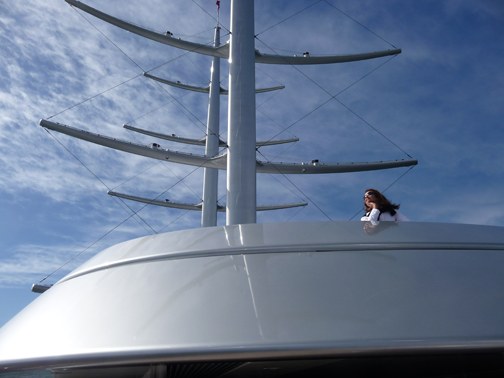
©2008 Latitude 38 Media, LLC
"It was one of the greatest days of my life," said Lourdes Livingston, wife of Sail Magazine editor Kimball Livingston, after her sail aboard Tom Perkins’ 289-ft Dyna-Rigged Maltese Falcon on Sunday. In support of the Leukemia Cup, Belvedere resident Perkins graciously played host on his magnificent yacht to a number of contributors and others during the course of the weekend.
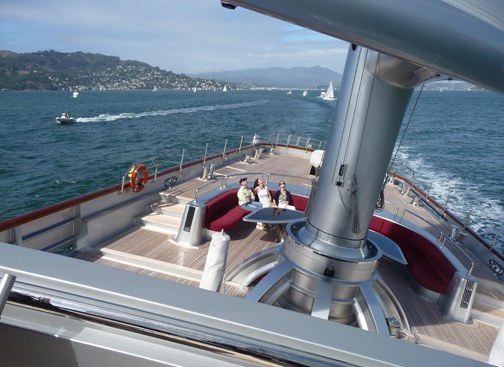
©2008 Latitude 38 Media, LLC
Sunday was our second time aboard Falcon, the first being at her launch in Italy. The more we see of her, the more we’re impressed. If you’ve only seen the yacht from a distance, the main thing you can’t see is the quality of craftsmanship throughout. Obviously this is a huge yacht, but every last detail — most of it done by Turks — is absolutely superb. All the guests marvelled at the quality.
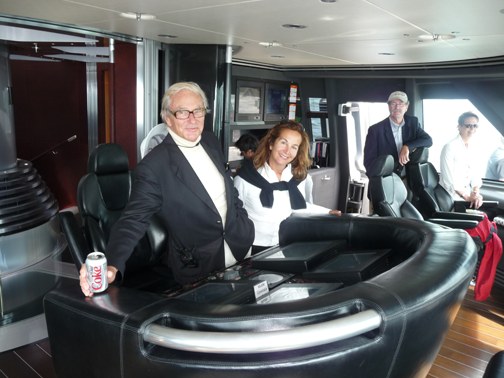
©2008 Latitude 38 Media, LLC
The other thing you can’t see is how brilliantly the unique Dyna-Rig sail plan, perfected on Perkins’ nickel, works. We were underway for about four hours, with Perkins driving and controlling the sail plan almost the entire time. The yacht is steered with a small knob, and the freestanding masts and 15 sails are controlled with the push of a few buttons. Indeed, Perkins looked as though he was playing a nautical version of a mighty Wurlitzer.
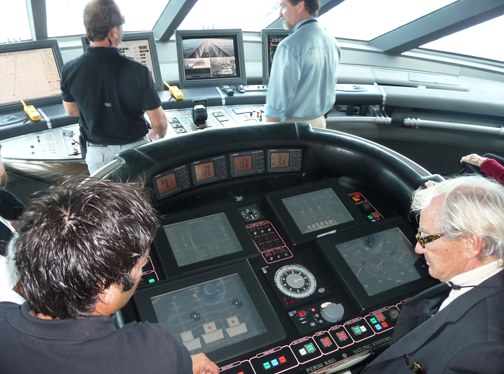
©2008 Latitude 38 Media, LLC
The most thrilling moment was when Perkins jibed the boat. By pushing several buttons, all three of the nearly 200-ft tall masts, with their very wide fixed yards spreading out the sails, rotated very rapidly. Indeed, if you stepped back about 10 feet from the helm position, you could watch and touch as the six-ft or so diameter middle mast turned. By the way, Perkins reports that none of the masts can ever be removed from the boat without destroying the boat.
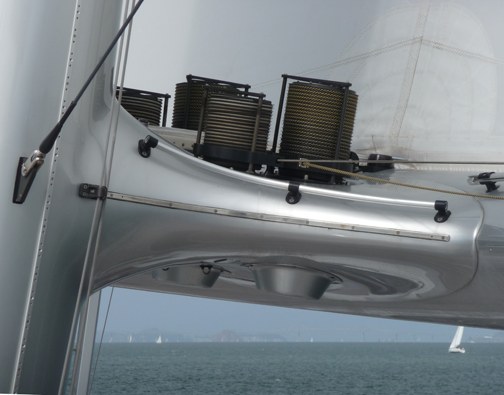
©2008 Latitude 38 Media, LLC
At close to 1,200 tons, Falcon is naturally slow to accelerate, but once underway she moves right along. In 15 knots of true wind, she was sitting on 12 knots. On a not particularly breezy day, she topped out at 17 knots, heeling about 15 degrees at the time.
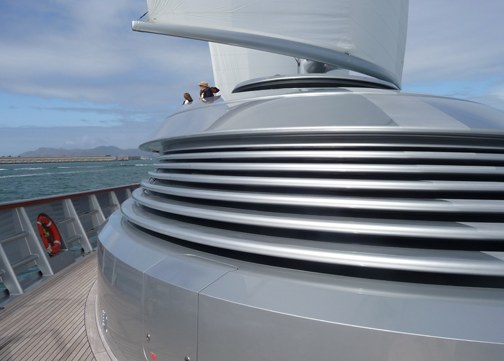
© Latitude 38 Media, LLC
If you’ve seen Falcon sailing the Bay, from time to time you might have seen her 15 sails luffing, and thought she was being poorly sailed. On the contrary. Initially, Perkins and crew sailed Falcon like a normal yacht, increasing or decreasing the amount of sail area in reponse to the amount of wind. They still do that, of course, but within certain wind ranges they sail the yacht "like a dinghy," meaning they do things like luff the sails when appropriate. They’ve found that the yacht sails faster that way.
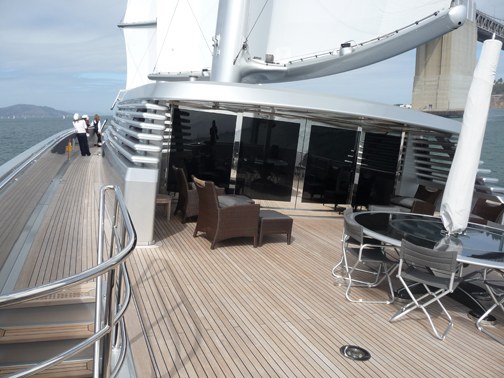
© Latitude 38 Media, LLC
Maltese Falcon has sailed 50,000 miles since she was launched 2.5 years ago. Perkins is proud to report that 65% of that has been under sail alone, while 20% has been motorsailing, and just 15% under power alone. She really does sail that well. Perkins loves the ocean crossings, and has done most of them. One of his favorites was across the Atlantic from the Canaries to St. Barth in the Caribbean last winter. Not only was it a swift passage, it was done without using the engine at all.
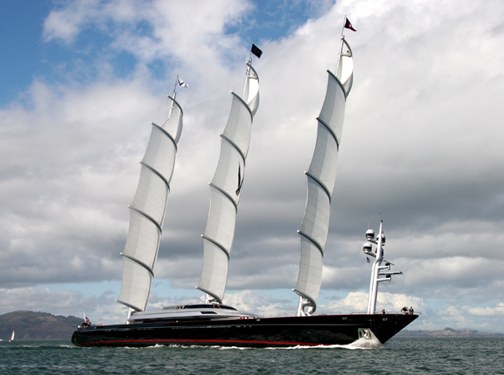
Toward the end of the month, Falcon will be headed down the coast of Mexico and up into the Sea of Cortez. So look out Ha-Ha boats! Perkins will be armed with a new submarine designed by Marin resident and sailor Graham Hawkes. The sub has been tested off Richmond, and next week will be tested in the deep waters off Monterey. Assuming the tests go well, Perkins plans to follow the whales when they dive deep to the depths in the Sea of Cortez.
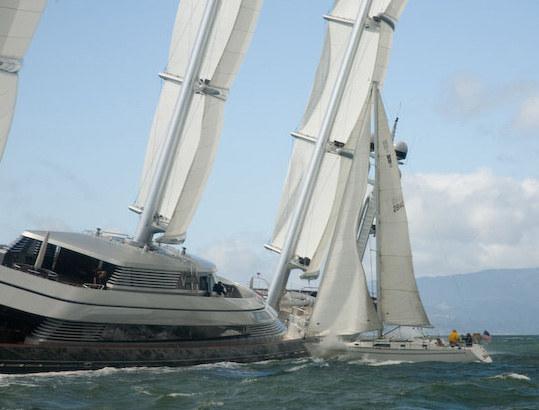
Perkins was thrilled with the glorious reception Falcon received from Bay sailors and all those along the shore. But if you’re on a boat, please give her plenty of room to operate. Because she displaces more than 300 tons, she can’t move around the Bay without a pilot aboard. And so far the pilots have had to sound five blasts on far too many occasions. On Saturday, there was even a collision — the first ever involving Falcon — between what appears to have been a Nordic 40 and the big yacht. Falcon‘s rail and hull were slightly damaged, and the mast of the other boat punched a whole in one of her sails. Falcon‘s crew was up until 1 a.m. patching it in place so the yacht would be ready to sail on Sunday. So look all you want, but please don’t touch.
